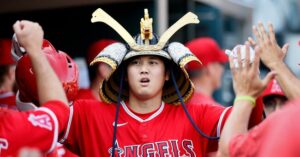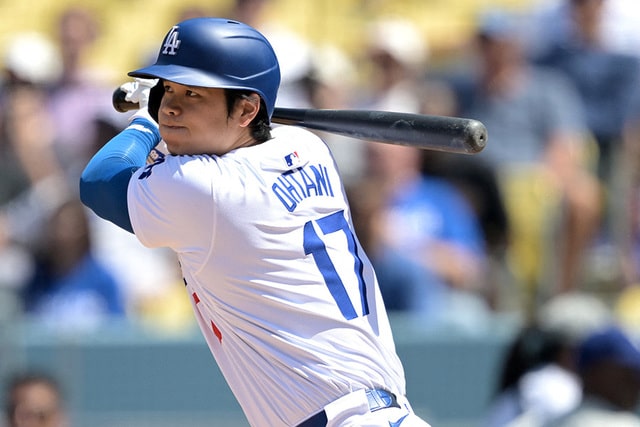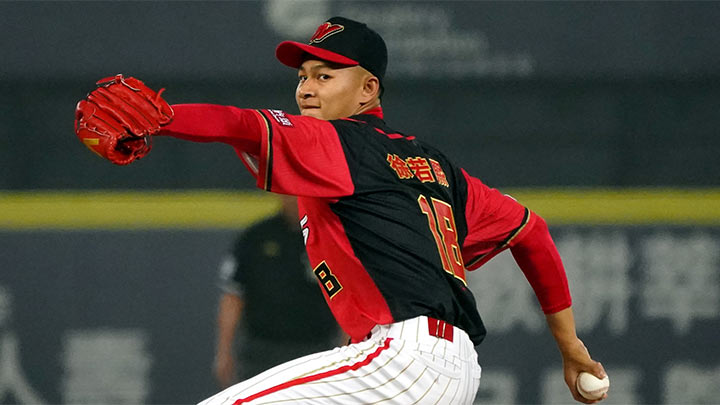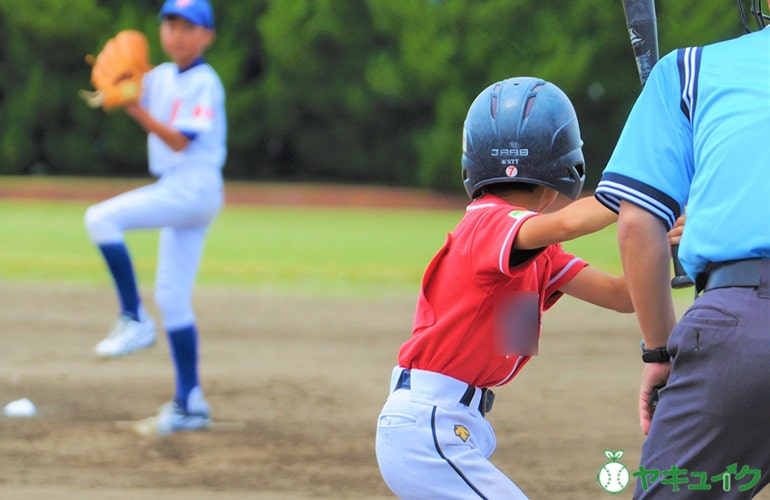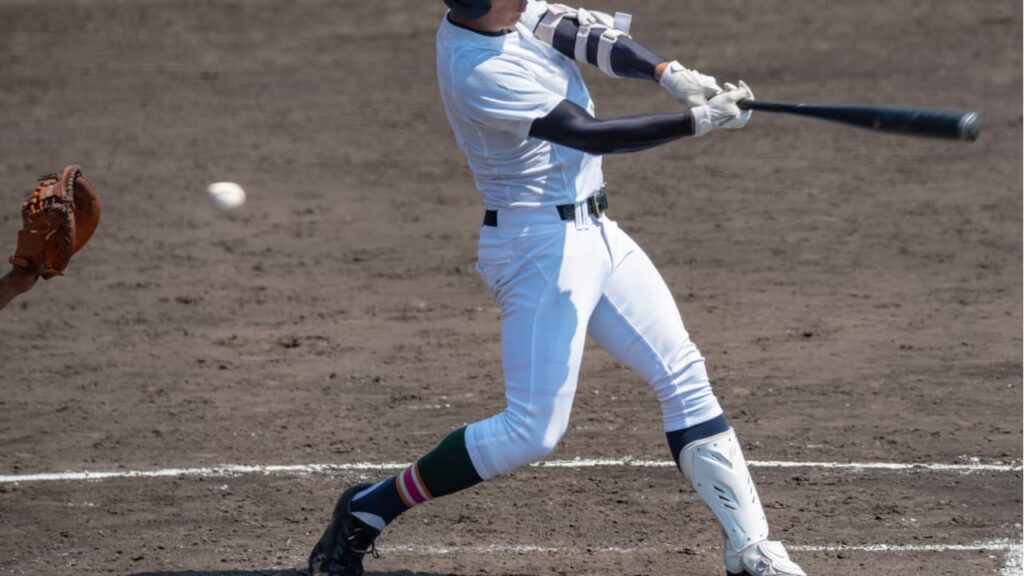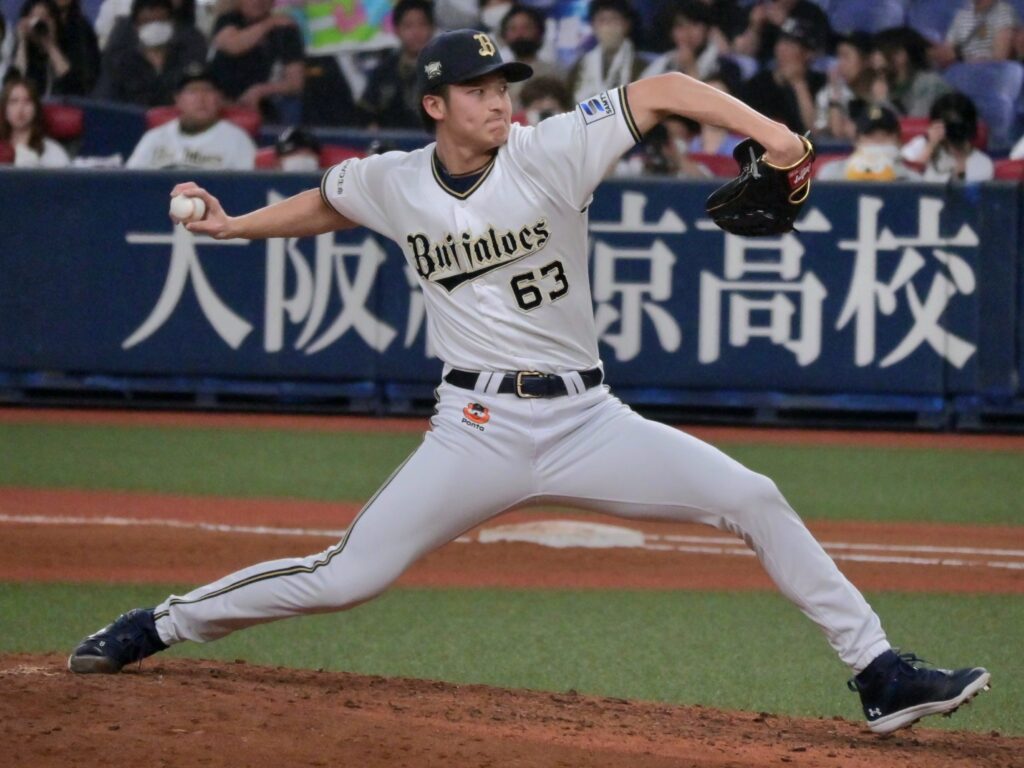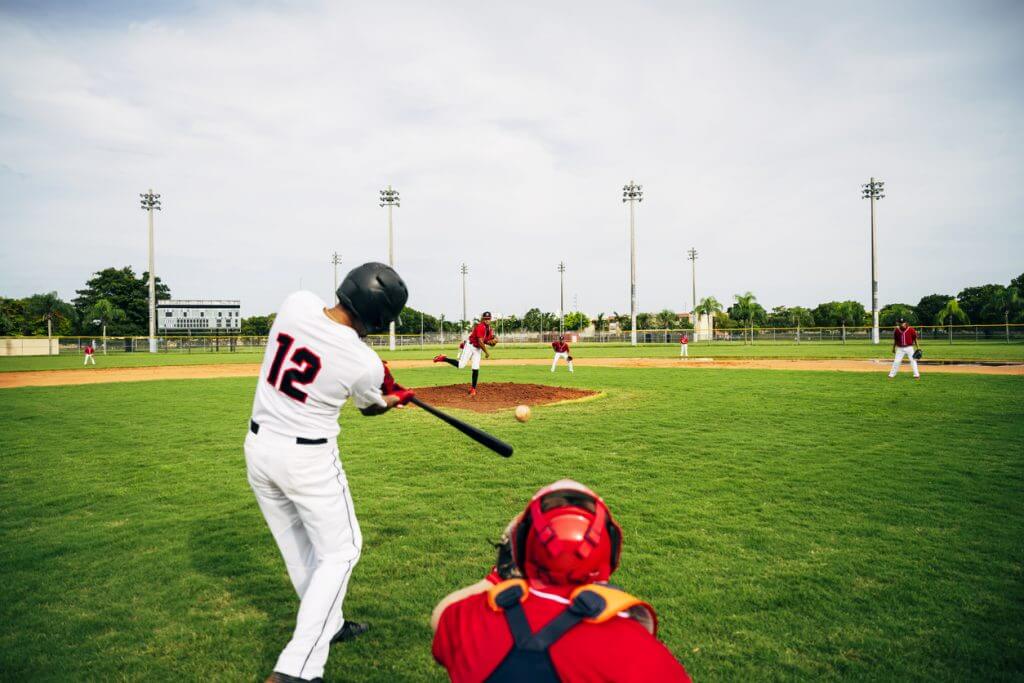
In baseball, the center fielder is one of the most important positions.
The center fielder is a position that covers the center of the outfield and is required to have a wide defensive range and strong defensive ability.
In this article, we will explain in detail what kanji is used to write the baseball center fielder, and what specific position it refers to.
We will also introduce the role and importance of the center, the skills required, training methods, and tactics, as well as some of the great players of the past and today’s top players.
Whether you’re a beginner or an advanced player, this guide will help you learn more about center fielders in baseball.
Let’s start by looking at the basic center position and its kanji spelling.
目次
- 1 Basic center position and kanji notation
- 2 The role and importance of the Center
- 3 Skills and characteristics required for the center
- 4 Center training methods and practice menus
- 5 Center Tactics and Strategies
- 6 Famous centre players and their playing styles
- 7 The Center’s Future Outlook and Expectations for the Next Generation
Basic center position and kanji notation
In baseball, the center fielder, commonly known as center, is one of the most important positions in the outfield.
This position has a wide defensive range and requires high defensive ability, so we will explain in detail the kanji notation, basic positioning, and defensive range.
The Kanji for the Center and its Meaning
Center fielder is written as “chuuinite” in Japanese.
It can also be abbreviated to “中”.
The term “center field” comes from the position being in the center of the outfield.
“Naka” means the center, and “katana” means to protect firmly.
As you can see from the kanji, the center plays an important role as the core of the team’s defense.
The role of a center fielder is to cover a wide area in the center of the outfield, reliably catch batted balls, and improve the team’s defensive strength.
This position requires high athleticism and reaction time, as well as coordination with other outfielders and infielders who are far from the defensive position.
Center’s basic position and defensive range
The basic position of a center fielder is the center of the outfield. Their defensive range is very wide, covering from left center to right center.
The center fielder’s positioning is fine-tuned depending on the opposing batter’s tendencies and the pitcher’s style of play.
For example, against a pull hitter, the pitcher may shift toward right-center field.
The center fielder’s defensive range extends from behind the infielders to just in front of the fence.
In particular, the ability to step back quickly and catch fly balls near the fence or deep hit balls is required.
You also need to move forward to catch shallow fly balls to prevent runners from advancing.
The role of the Centre includes the following elements:
-
Catching fly balls: Center fielders are required to catch fly balls from the outfield with precision. High jumping ability and diving catching techniques are important.
-
Relay plays: When returning the ball from the outfield to the infield, relay plays are important. The center fielder uses his strong arm to make accurate throws and quickly return the ball to the infielder. This prevents runners from advancing to the next base.
-
Preventing runners from advancing: As a key player in the outfield defense, the center fielder is also responsible for preventing runners from advancing. For example, he is required to throw the ball quickly and accurately to get runners out who are trying to tag up.
-
Defensive instructions: As the central figure in the outfield, the center fielder may also give instructions to the other outfielders and infielders on their defensive positions. They give appropriate instructions according to the batter’s tendencies and the situation of the game, improving the defensive ability of the entire team.
Understanding the basic position and defensive range of the center makes the importance of this position clearer.
Center fielders have a wide defensive range and strong defensive ability, and play a major role as the core of the team’s defense.
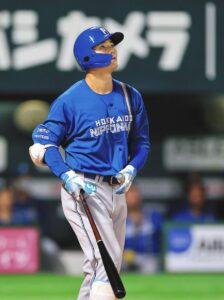
The role and importance of the Center
The center fielder, commonly known as center, is a very important position in baseball.
The player has a wide defensive range, so he is required to have strong defensive ability and quick decision-making skills.
Here we will take a closer look at the center’s specific defensive role and his importance to the team.
Centre defensive role
The main role of a center fielder is to cover a wide defensive area and make sure to catch the ball.
In particular, the center fielder is positioned in the center of the outfield and defends from left center field to right center field.
Therefore, the following specific roles are required:
-
Catching fly balls: Center fielders are required to catch fly balls from the outfield with precision. They need high jumping ability and diving catching skills. In particular, the ability to quickly step back and catch balls hit close to the fence or deep flies is important.
-
Covering batted balls: The center fielder covers batted balls that the left and right outfielders cannot handle. This is a particularly important role and is essential to the overall defensive strength of the team. The center fielder must be able to move quickly and get into the best position to receive batted balls.
-
Preventing runners from advancing: The center fielder must return the ball from the outfield to the infield quickly and accurately to prevent runners from advancing. In particular, a strong arm and accurate throwing are required to prevent runners from advancing to the infield when trying to tag up.
-
Relay Plays: The center fielder also plays a key role in relay plays, acting as a relay when passing the ball from the outfield to the infield, delivering the ball to the infielder quickly and accurately, thus increasing the chances of getting the runner out.
The importance of the center in a team
The importance of a center fielder goes beyond just defensive ability.
The center plays a central role in the team’s overall defensive strategy.
-
Defensive Command: The center fielder is the center of the outfield and gives instructions to the other outfielders on their defensive positions. He gives appropriate instructions according to the batter’s tendencies and the game situation, optimizing the defensive formation. This improves the defensive ability of the entire team and prevents runs from being scored.
-
Mental Support: The center also acts as the mental support of the team. Having a player who can cover a wide defensive range and has high defensive ability allows teammates to play with confidence. In particular, the presence of a reliable center is a great source of security for young players and players with little experience.
-
Offensive and defensive balance: Center fielders play an important role in both offense and defense. They are often placed higher in the batting order and are expected to create scoring opportunities. A strong center fielder not only improves the team’s scoring ability, but also puts pressure on the opposing pitcher.
-
Leadership: Centers are expected to demonstrate leadership both on and off the field. They place emphasis on communication during the game and strengthen cooperation with other players. In particular, by working closely with outfielders and infielders, they can reduce defensive mistakes and improve the performance of the entire team.
These factors make the center fielder an essential part of any baseball team.
Not only do they have a wide defensive range and accurate throwing skills, but they also play a central role in boosting the morale of the entire team and giving the team an advantage in the game.
By understanding the importance of the center fielder, you will be able to learn and practice more advanced baseball strategies.
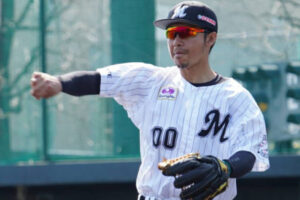
Skills and characteristics required for the center
The center fielder position in baseball requires many advanced skills and attributes.
Here we’ll take a closer look at defensive ability and reaction speed, throwing technique and accuracy, fielding and catching.
Defense and reaction speed
One of the most important skills for a center fielder is defense.
In order to cover a wide defensive range, excellent defensive ability is essential. A center fielder must cover a wide area from left center field to right center field and react quickly to batted balls.
Strong defensive ability is directly linked to the ability to deal with a variety of batted balls, including fly balls, liners, and grounders.
Reaction speed is also very important. A center fielder needs to make the right decisions and get into position quickly when the ball is coming towards them.
In particular, when catching a hard hit ball or a difficult fly ball close to the fence, you are required to react instantly and get into the appropriate catching position.
This will ensure you get an out.
Throwing Technique and Accuracy
Throwing technique is an essential skill for a center fielder.
In order to return the ball from the outfield to the infield quickly and accurately, you need a strong arm and accurate throwing technique.
The center fielder’s throw is an important tool in preventing runners from advancing.
A strong arm and accurate throwing is required, especially against runners trying to tag up.
The distance from center field to home base is long, so a strong throw is required, but at the same time, the technique to deliver the ball accurately into the catcher’s mitt is essential.
This increases the chances of getting the runner out.
Accurate throwing is also required during relay plays.
They often act as a relay when returning the ball from the outfield to the infield, and by sending the ball to the infielder quickly and accurately, they prevent runners from advancing to the next base.
Fielding and Catching
Fielding and catching are basic center fielder skills, but they are extremely important.
The center fielder needs to be able to handle a variety of batted balls, including fly balls, liners, and grounders.
Fielding technique is essential to ensure these batted balls are handled reliably.
Catching techniques are especially important for fly balls, requiring high jumping power and the ability to make a diving catch.
Center fielders need the ability to step back quickly and make sure they catch balls hit close to the fence or deep fly balls.
You also need to move forward to catch shallow fly balls to prevent runners from advancing.
Fielding techniques for liners and grounders are also important.
The center fielder moves quickly to get into position and make sure to catch the ball.
In particular, reflexive movement is required when hitting a liner, while how you use your glove and body movement are important when hitting a grounder.
By collectively improving these skills and attributes, a center fielder can significantly improve his team’s defensive strength.
Centers with advanced technique and judgment are key players who can influence the flow of a game.
By gaining a deeper understanding of the role of center and acquiring the appropriate skills, you will be able to play at a higher level.

The center fielder position requires a wide defensive range and strong defensive ability.
To improve these skills, you need the right training methods and practice menus.
Here we’ll go into detail about basic defensive drills and fielding, throwing and catching drills, and training to improve reaction speed.
Basic defensive drills and fielding
Basic defensive training focuses on handling ground balls, fly balls, and liners.
Through these drills, you will develop your reaction time to batted balls and accurate fielding techniques.
-
Ground Ball Handling: When catching a ground ball, face the ball with good posture and keep your glove low to catch it. This will ensure good fielding. Also practice rising quickly to prepare for the throw.
-
Catching fly balls: Proper positioning and timing are important for catching fly balls. For high hit balls, we practice catching while running backwards. We also practice catching at the fence and diving.
-
Liner catchers: Quick reactions and accurate catching are required for liners. Practice moving reflexively and catching the ball in the center of your glove.
Throwing and catching practice
Throwing and catching are essential skills for a center fielder.
Through these drills, you will develop accurate, powerful throwing and reliable catching.
-
Throwing practice: In throwing practice, we will practice long-distance throwing, making use of our strong arms. We will hone our shoulder strength and throwing form, aiming for accurate throwing to first base or home plate. In particular, by repeatedly throwing the ball long distances and quickly, we will simulate situations close to those in real games.
-
Catching practice: Practice to reliably catch ground balls, flies, and liners. We place special emphasis on practicing to handle difficult hit balls, so that you can respond to various situations. We also practice quick throwing movements after catching the ball.
-
Tag play practice: Practice quickly tagging runners who are trying to steal or advance. This practice improves the technique of accurately catching the ball thrown by the catcher and quickly making the tag.
Training to improve reaction speed
Training to improve reaction speed is very important for a center fielder.
Developing the ability to react quickly to batted balls during a game can greatly improve your defensive ability.
-
Reaction practice: Practice reacting instantly to and catching balls hit randomly by the coach or machine. This will help you develop reaction speed in a situation close to a real game.
-
Speed training: Short sprints and ladder training will improve your explosive power and foot speed, which will improve your initial reaction time to the ball.
-
Visual training: By training your eye movements, you can improve your ability to instantly grasp the trajectory of the ball. By incorporating visual training to follow the ball, you can improve your reaction time.
By incorporating these training methods and practice menus, you can improve your overall defensive ability as a center fielder.
By continuing to do the right training, you will be able to maximize your performance in matches and contribute to your team.
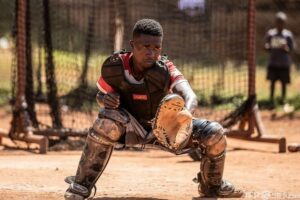
Center Tactics and Strategies
As the key defensive player in baseball, center fielders use many tactics and strategies.
Here we will explain in detail how to take defensive positions and move, how to respond to fly balls, and the importance of relay plays and teamwork.
Defensive positioning and movement
The center fielder’s defensive position is adjusted according to the opposing batter’s hitting tendencies and the pitcher’s pitching style.
By taking the proper defensive position, you can make the most of your defensive range and respond quickly to batted balls.
-
Analyze the batter’s tendencies: Analyze the batter’s past hit data to predict the direction and speed of the ball. For example, it is common for a pull hitter to position himself closer to right center field, and for a hitter who hits in the opposite direction to position himself closer to left center field.
-
Positioning according to pitching style: The defensive position is adjusted according to the pitcher’s pitching style and type of ball. For example, in the case of a fastball pitcher, the batter is more likely to pull the ball, so the batter will position himself accordingly.
-
Flexible movement: When a batted ball comes flying, it is necessary to react quickly and move in the appropriate direction. In particular, since the center fielder in the outfield has to cover a wide area, it is important to move forward and backward in addition to moving left and right. This allows you to respond quickly to fly balls and line drives.
Dealing with fly balls
Reacting to fly balls is a very important skill for a center fielder.
By taking the appropriate action, you can be sure of getting an out.
-
Proper positioning: When a fly ball is hit, it is important to first take proper positioning. Instantly judge the ball’s trajectory and move to the appropriate position. For high fly balls, take position early to ensure the ball’s landing point.
-
Jumping power and catching technique: Catching a fly ball requires jumping power and accurate catching technique. In particular, high jumping power is required to make a reliable catch of balls hit close to the fence or deep fly balls.
-
Diving catch: For difficult hits, the technique of making a diving catch is also important. A diving catch requires advanced technique and explosive power, as you use your whole body to catch the ball.
The importance of relay play and teamwork
Relay plays play a key role when the center fielder returns the ball from the outfield to the infield.
By performing relay plays properly, you can prevent runners from advancing.
-
Accurate Throwing: Accurate throwing is required when making relay plays. By being accurate in throwing long distances from the outfield to the infield, you can get the ball to the infielder quickly.
-
Strengthening cooperation: It is important for the center fielder to strengthen cooperation with the other outfielders and infielders. During relay plays, he communicates closely with the infielders to make smooth plays. This increases the chances of getting the runner out.
-
Reading the runner’s movements: You need to instantly judge the runner’s movements and take the appropriate action. For example, if a runner tries to tag up, it is important to return the ball quickly and accurately to get him out.
By utilizing these tactics and strategies, center fielders can greatly improve their team’s defensive strength.
By improving your defensive positioning, how to respond to fly balls, and teamwork during relay plays, you will be able to maximize your performance in games and contribute to your team.
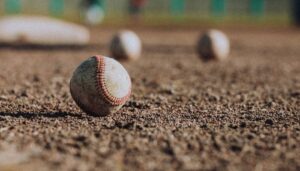
Famous centre players and their playing styles
There have been many great center fielders in the history of baseball, whose playing styles have been celebrated throughout the ages.
Here we will take a closer look at some of the great center players of the past and the top center players of today.
Great centre players of all time
-
Willie Mays Willie Mays is considered one of the greatest center fielders in the history of major league baseball. His style of play was characterized by excellent defense and incredible hitting. In particular, his running catch in the 1954 World Series, known as “The Catch,” is a memorable moment that is still talked about today. Mays played 24 seasons and won 12 Gold Glove Awards.
-
Ken Griffey Jr. Ken Griffey Jr. was a great player who played in the major leagues from the 1990s to the 2000s. His playing style is characterized by powerful hitting and brilliant defense. Griffey won 10 Gold Glove Awards and hit 630 home runs. He was especially praised for his wide defensive range and strong arm as a center fielder, which produced many highlight plays.
-
Joe DiMaggio Joe DiMaggio is a legendary center fielder who played for the New York Yankees. His playing style is characterized by excellent hitting technique and strong defensive ability. DiMaggio holds the major league record of hitting in 56 consecutive games, a record that still stands today. He also won three MVP awards and contributed greatly to the team’s World Series victory.
Introducing the top centre players of today
-
Mike Trout Mike Trout is considered one of the best center fielders in modern major league baseball. His style of play is characterized by overwhelming hitting power and outstanding defensive ability. Trout has won multiple MVP awards and been selected to the All-Star team multiple times. His speed, power, and wide defensive range are among the best in modern baseball.
-
Jackie Bradley Jr. Jackie Bradley Jr. is a modern-day center fielder known for his defensive prowess. His playing style is characterized by excellent fielding and a strong arm. Bradley is a Gold Glove Award winner, and his range and reaction time have helped him get numerous outs and contribute to his team.
-
Mookie Betts Mookie Betts is a versatile player who can play both as a center fielder and a right fielder. His playing style is characterized by a well-balanced offensive and defensive ability. Betts has won the MVP award and has won the Gold Glove Award multiple times. His quick movements and excellent defensive ability have the power to change the flow of a game.
These great players have helped evolve the role of the center fielder and increase its importance in each era.
By learning about their playing styles and achievements, you can re-examine the appeal and potential of the center position.
Understanding the characteristics of each player and incorporating them into your own play will be a step towards further growth.
